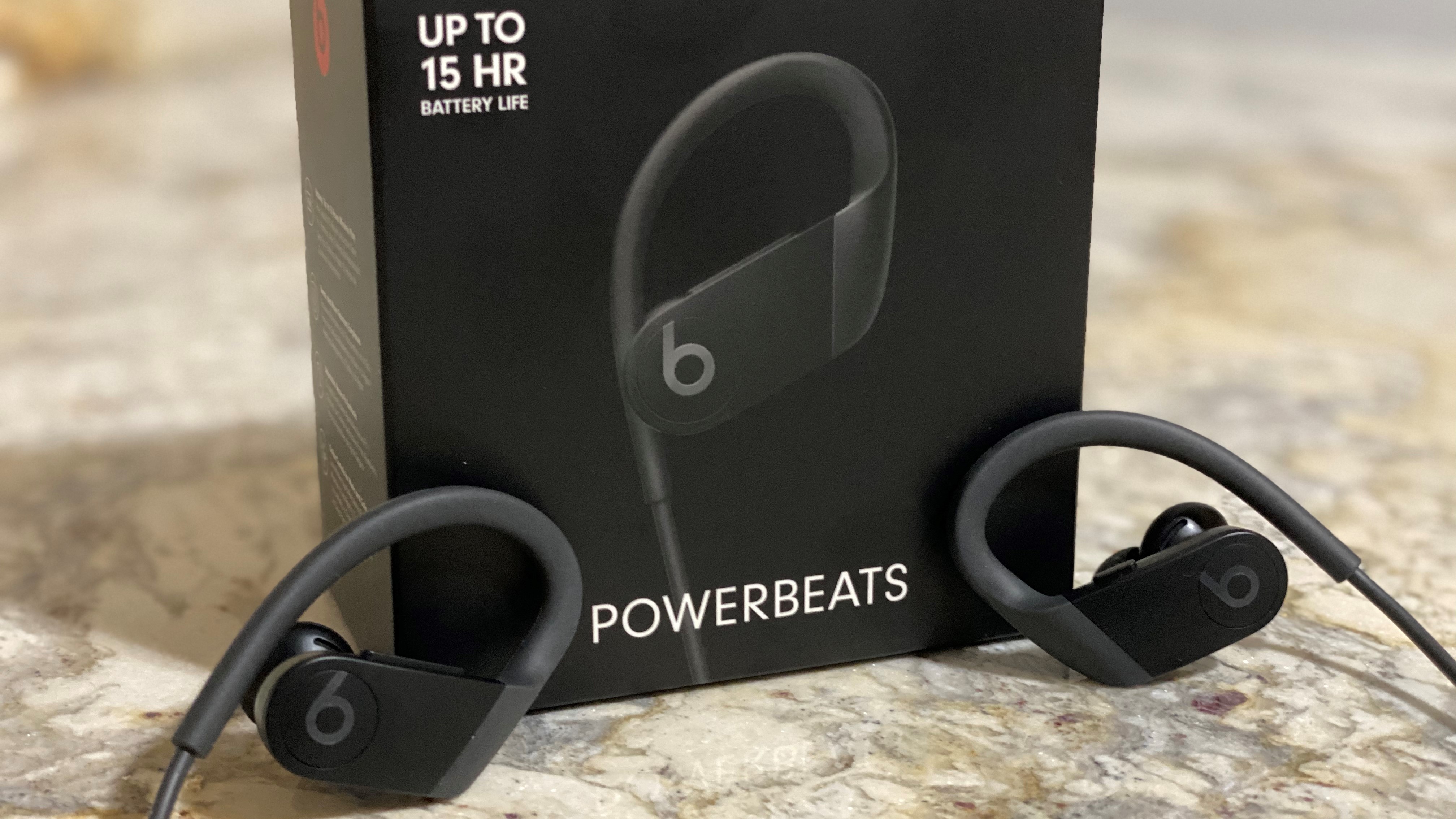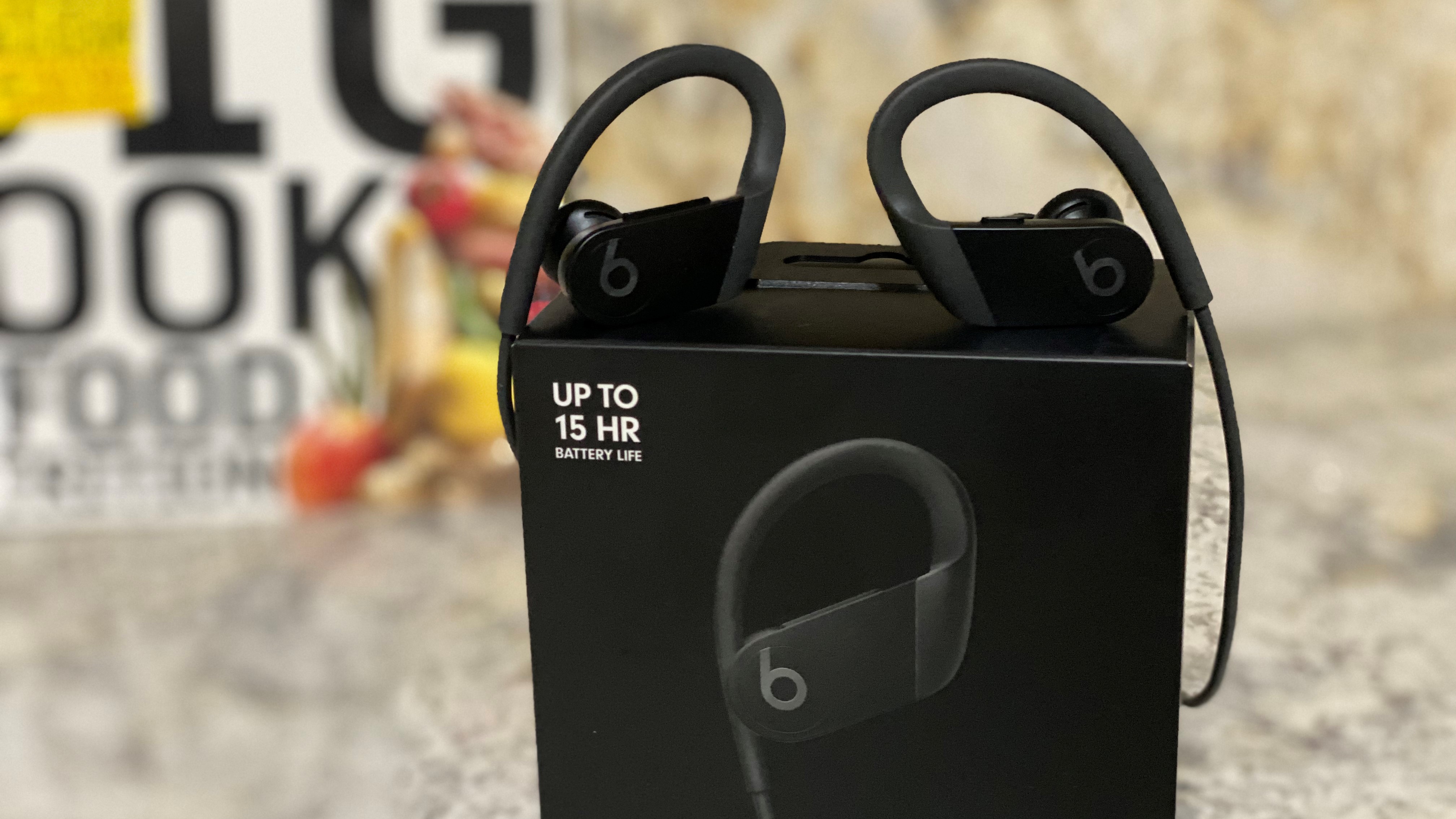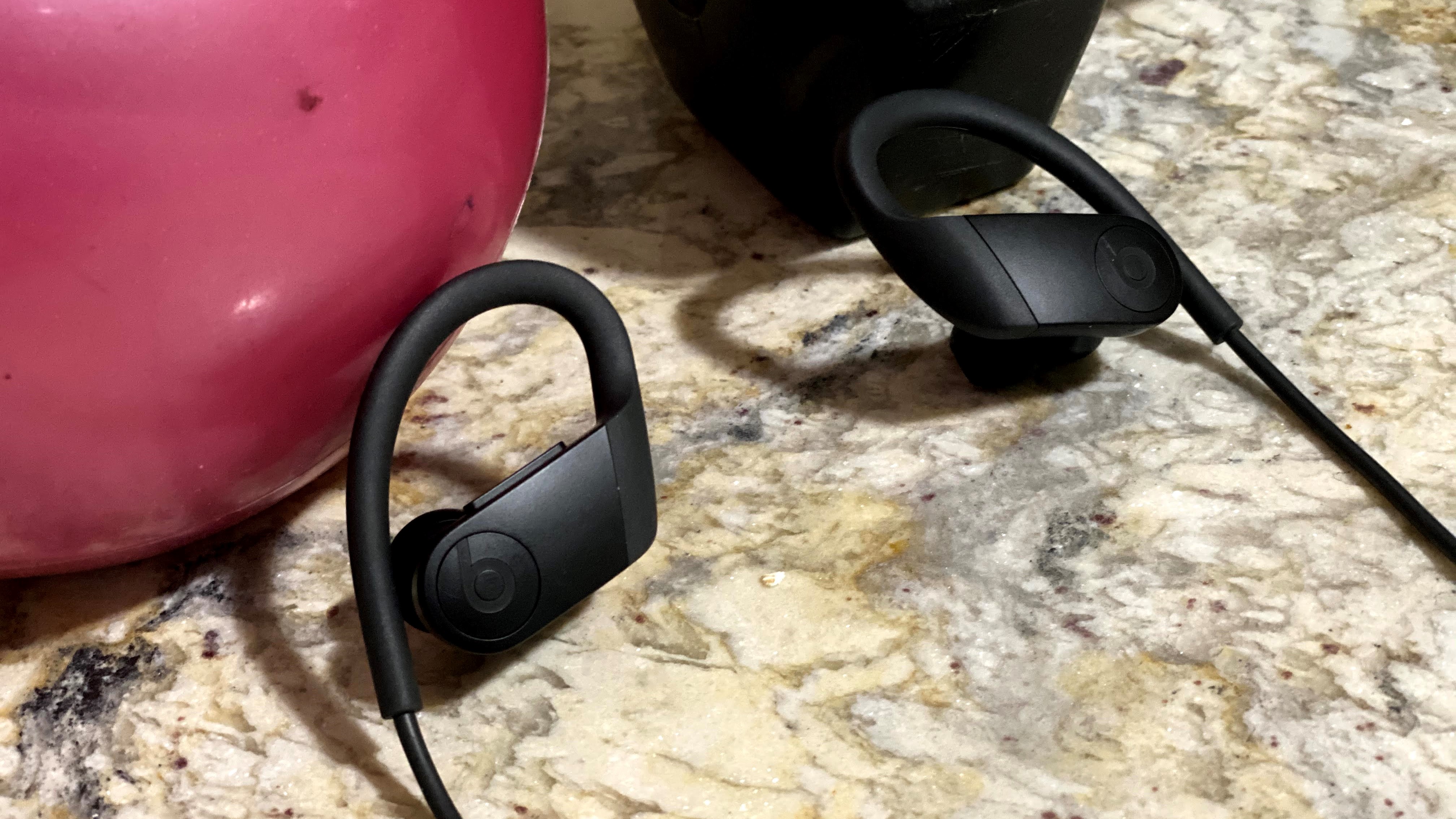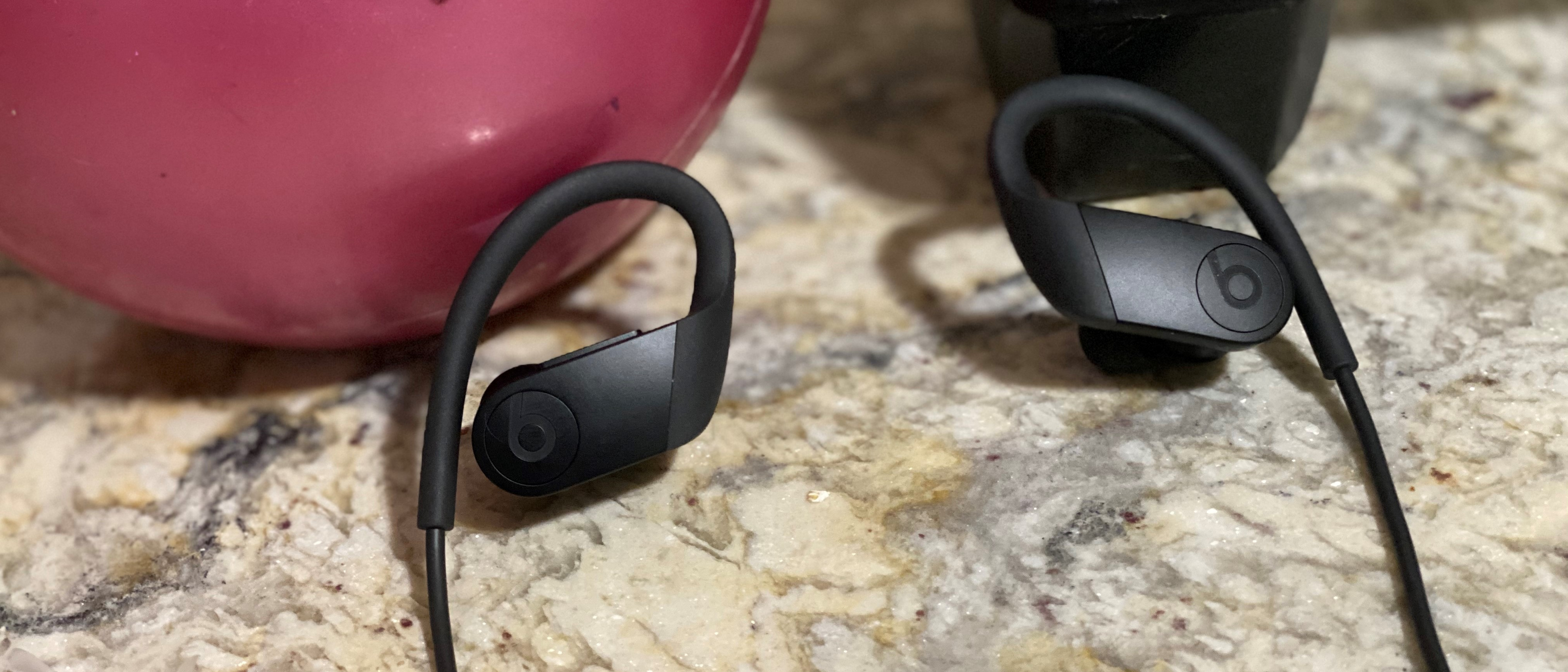TechRadar Verdict
The new Powerbeats are a thoughtful evolution of Beats' wireless workout earbuds. They're missing a few niceties like active noise-reduction and may potentially feel less comfortable than some competitors, but by and large they're a decent cheap alternative to Apple’s higher-end in-ear headphones.
Pros
- +
Better sound quality
- +
Hands-free Siri
- +
15-hour battery life
Cons
- -
Difficult fit
- -
The wire isn’t ideal
- -
No noise reduction
Why you can trust TechRadar
After spending some time with them, it's clear that the new Beats Powerbeats is a significant upgrade on the company's wireless workout earbuds, offering a sound quality lifted directly from the Beats Powerbeats Pro, an IPX4 rating and Apple’s H1 Wireless Chip that can summon Siri with the sound of your voice.
They’re supposed to last 15 hours per charge – six hours more than the Powerbeats Pro and three more than the Powerbeats 3 – and can be paired to multiple devices and share songs wirelessly with another pair of Beats headphones.
They're not quite as good as Apple's high-end alternative, the Beats Powerbeats Pro and Apple AirPods Pro, especially in terms of the way they fit and sit in your ears, but they have a lot of the same technology and specs to make them a decent cheap alternative.
Price and release date
The Beats Powerbeats 4* (it’s the fourth Powerbeats headphones, technically speaking, though, officially it’s simply labeled ‘Powerbeats’) is the latest addition to the Beats family, and it arrived in-stores and online on March 18, 2020 and costs $149.99 (£129.95 / AU$219.95) – basically $50 less than the Powerbeats 3 and $100 less than the similar-sounding Powerbeats Pro.
That said, they’re the exact same price as the base Apple AirPods in most regions. The advantage the Powerbeats have is that they offer sweat-resistance and interchangeable eartips, but they also have a wire running between the buds that you won’t find on the Apple AirPods. All those details help distinguish the two earbuds – which is good – but it also means having to pick between two solid wireless headphones.

Design
If you’re a fan of the tried-and-true Powerbeats design, you’ll like the new models. The new Powerbeats have the same curved stem design as previous models but they instead terminate in new, smaller ear nozzles that come from the Powerbeats Pro.
Inside the box you’ll also find a small Lightning to USB Cable plus a soft carrying case and directions for the earbuds, though setup is as simple as holding them near an iOS device or pairing them via the power button to an Android device.
Inside the large housing are the drivers for the earbuds, and behind each of those on both sides are the controls for the headphones. On the left housing you’ll find the power / Bluetooth pairing button while on the right housing you’ll find a volume rocker and Beats button that controls play/pause and your virtual assistant.
Finding the right fit will all come down to trying all the eartips included in the box (small, medium, large and double flange) to find the one that best fits. As we’ve said in the past, getting the right fit is important as that controls how much passive noise reduction you’ll get from the earbuds, how good the bass response is and how much of the outside world that you’ll hear. Getting the right fit is a bit trickier with these than other in-ear headphones we’ve tested recently but hopefully we’ll find something that works as we continue to test them in the week ahead.
On each earbud is a beam-forming microphone that’s used to summon Siri, which can in turn make phone calls, read texts aloud and answer questions. At first it felt like Siri wasn’t working – as the Powerbeats don’t make the chime sound by default – but rest assured that if you ask a question using ‘Hey Siri’ or hold down the right Beats button, Siri will answer.
Here’s Powerbeats’ big trade-off: they’re not true wireless earbuds – there’s a wire that runs from each rubber stem to the other connecting them – and the fit can be a bit tricky to get right. Apple says it’s done everything in its power to make the wire as comfortable as possible (making it chaffe less by reducing how coarse it is, for example) but nothing will ever beat the freedom that true wireless headphones bring. The counterpoint there, of course, is that it's impossible to lose two earbuds that are tied together, and being able to share the power means twice the battery life - both of which might be an advantage over the AirPods.

Performance
In terms of sound quality, the Powerbeats have a decently wide soundstage and good overall clarity in the entire audio spectrum. They match what we've heard from other earbuds around this price point but there are certainly cheaper, better-sounding alternatives out there if you're an audiophile.
That said, they sound pretty similar to the Powerbeats Pro – one of our daily driver earbuds that constantly float around in our gym bag that have a gentle v-shape tonality that boosts the highs and lows with a slight recess on the mids. In other words, music sounds reasonably energetic, but dynamic that movies and shows are unwatchable. It's a well-balanced headphone, and we really appreciate that.
Speaking of gyms and sound quality, the Powerbeats are purposely designed to allow some noise in – and in no way offer any form of active noise cancellation. That’s one big differentiator between the AirPods Pro, and is either a pro or a con depending on how much you like to hear the grunting, growls and metal-on-metal crashing sounds at your local fitness center. Can’t say we’re big fans of the lack of noise cancellation – and wish the headphones at least offered some form of customizable active noise reduction if nothing else – but the design choice is intentional even if we don’t agree with it.
What we do agree with, however, was the decision to make these tight-fitting and IPX4 sweat-resistant – you can comfortably take these to the gym without having to worry too much about them falling out or being ruined by a particularly intense workout. That’s basically a prerequisite for workout headphones and yet there are a number of manufacturers who blatantly disregard those needs.
In terms of codec support, you won't find aptX or aptX HD on-board, but you will get AAC and SBC on both Apple iOS and Android devices. The former is nice if you want to add a little more depth to the sound of your favorite music, while the latter makes the headphones' connection stable in a crowded listening environment.
In terms of battery, the headphones last 15 hours per charge and can be charged back in a relatively short amount of time: a five-minute charge gives you over an hour of battery life, which is nice. Recharging them is as easy as connecting the Lightning Cable to the Lightning port on the right bud.
The only bad news there is that the auto-off functionality takes awhile to kick in and can deplete your battery. The Powerbeats also don't automatically pause the music when you take them out, either, something other high-end earbuds can do that's missing here.

Final verdict
The Powerbeats are the necessary upgrade Beats needed to make for its sports-focused earbuds. These last longer than their predecessors and sound better, too. Thanks to hands-free Siri, their IPX4 rating and snug fit, they're good gym companions – and better than the AirPods for that physically fit audience.
What we don't like about them is that the fit can be tough to get right and even slightly uncomfortable when you wear them for an extended period. They're not totally wire-free like the Powerbeats Pro or AirPods Pro and they're missing active noise cancellation and noise reduction technology – which means you probably won't want to bring them on long flights or on your busy commute.
While they're not the best wireless earbuds on the market, the Powerbeats are promising contenders when compared to similarly priced wireless headphones, and lightyears ahead of their original namesake that launched eight years ago.
- Don't miss our list of the best wireless earbuds
Nick Pino is Managing Editor, TV and AV for TechRadar's sister site, Tom's Guide. Previously, he was the Senior Editor of Home Entertainment at TechRadar, covering TVs, headphones, speakers, video games, VR and streaming devices. He's also written for GamesRadar+, Official Xbox Magazine, PC Gamer and other outlets over the last decade, and he has a degree in computer science he's not using if anyone wants it.

